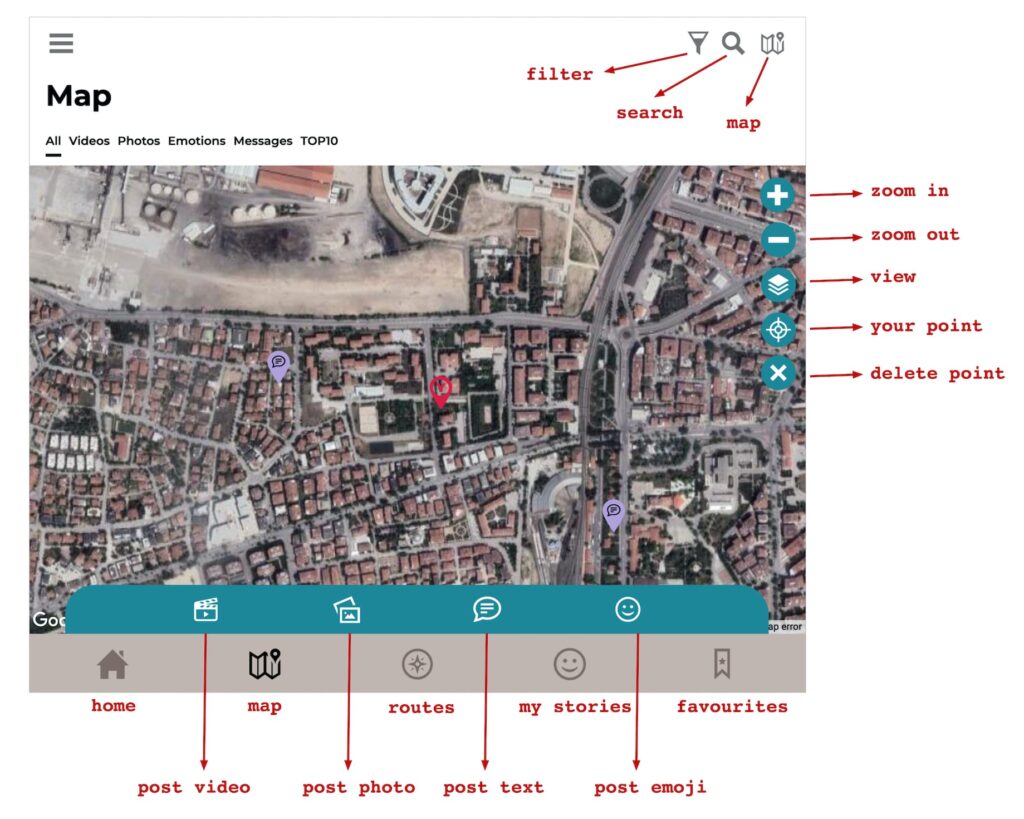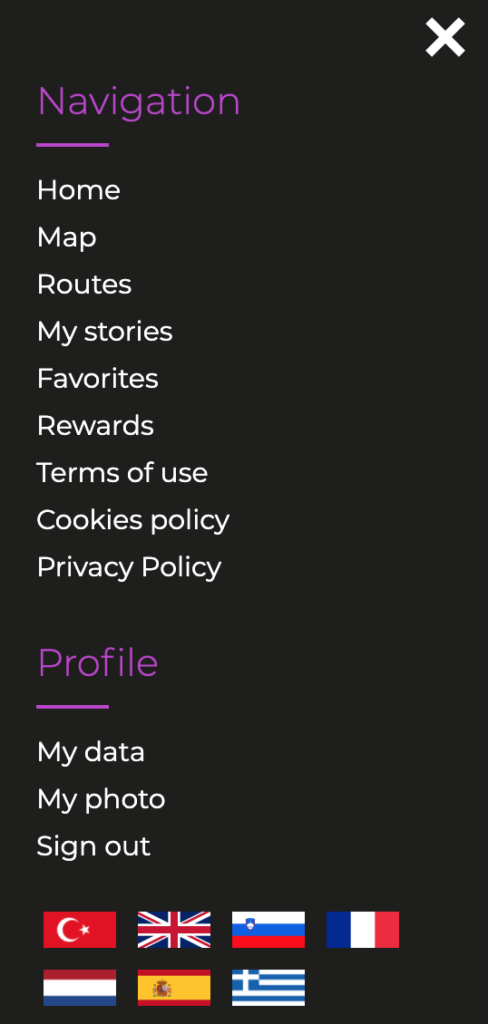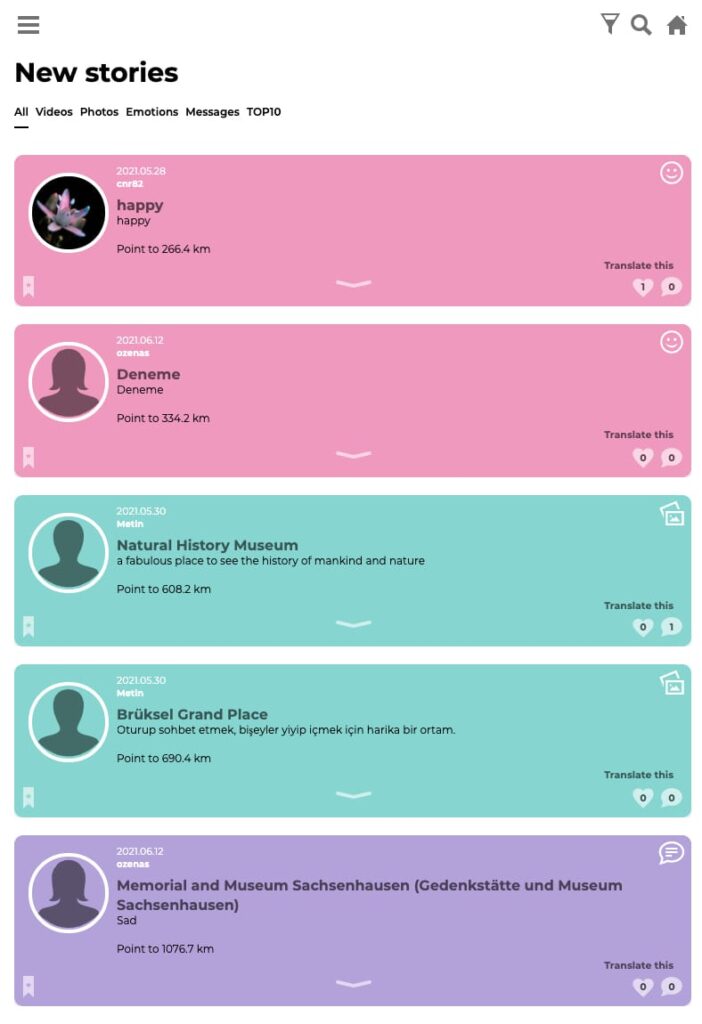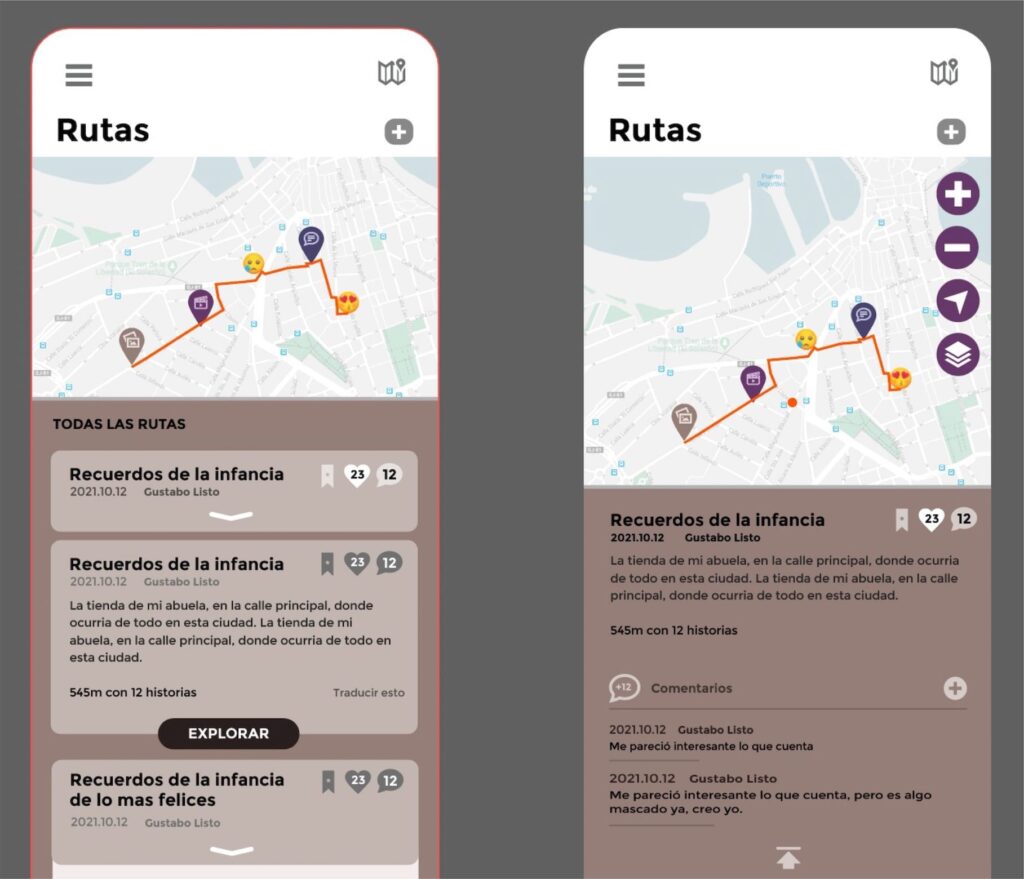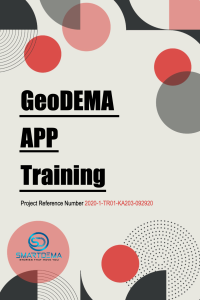R07 · GeoDEMA App Training
The training program on the App Geo-DEMA. is about how to create the App features, what the App does, how it works, what data collects, user experience, user interface and the thematic maps you can make with the stories published by the citizens.
The Goal
The training program on the App Geo-DEMA. is about understanding the process of an App creation from both the designer and user’s point of view. It doesn’t look for the perfect App design but to understand what kind of services can be developed once you have designed the right features. The training does not include the coding part, but you enhance the results if you include a coder.
The Learning outcomes
- Understanding the process of an App creation
- Understanding how to implement design thinking steps
- Understanding UX, UI and coding the APP
The SMARTDEMA module includes:
- How to find out what App features
- What the App does
- What data collects
- User experience
- User interface
- The thematic maps you can make with the stories published by the citizens.
- The coding of the App
- The Open Badge definition
Development of Skills
- Graphic design
- Agile framework
- Dealing with the client and the coder
The process of creating the App is based on two frameworks: Design Thinking to ideate, prototype, test, and release the App.
Agile framework is used to implement the backlog of features and Sprints
1. How to design the App
A. Pre-conceptual idea thinking what you want the App to do.
- Prototype a design and circulate for insights
- Iterate the model
- Launch a survey to ask the customer segment
- Analyse results of the survey
B. Prototype the features
C. Test the features with the customer segment
D. Iterate introducing the new features and fix bugs
The second framework is Agile to organise the backlog to define the features. Then divide the features into Sprints framing the definition of done and checking the Sprint release’s minimum value product.
There is an incremental value and adding features all the time because users at the very beginning do not see the functionalities. Still, once they start to play with the interface, they demand new features they did not think about.
In GEO-DEMA App, some examples of these are:
- Top 10 stories
- Private messages within stories writers
- Automatic translation of the stories to unlock gaming
2. The thematic Maps
All writers create stories either being geo-located in real-time or from desk and mobile devices via the progressive web.
The stories are collected in a database. The stories contain hashtags, geo-location, emotions, emojis and more.
With this information, we can produce precise thematic maps.
- How to create UX, UI and use the web design map interface
- How to use Kumu and other pieces of software for sentimental analysis.
3. How to design games based on the stories analysis
- The call for adventure
- The Plot-Narrative
- The Game Challenge
- The game rules
- The Game Play
- The Game resources
- The reward
4. The APP manual
- UX Features
- UI Screens
Some technical considerations:
1. Simplicity
Many people have short attention spans and if you make you app difficult to navigate then they will lose interest fast. If your customer cannot access their information quickly and easily, they will become frustrated and do it another way – possibly by using a competitor’s app. Clear, uncluttered screens with obvious leads to the next step in the app process and no ambiguity improve the customer experience and will encourage them to continue to use it.
2. Speed
Fast loading screens are vital. No one likes waiting, particularly when all they have to look at is a screen-loading symbol and this frustration soon gives way to boredom resulting in a decision to seek something better. Speed means an appropriate set of graphics and not fetching large tables and databases. Keep it simple and keep it quick.
3. Good image resolution
While you have to balance app speed against functionality and resolution, you have to ensure that what you have on screen is sufficiently detailed to make the user experience worthwhile. We are well past the times of blocky graphics and today’s users expect to have hi-definition and 16 million colours. Anything less will limit your app sales.
4. Flexibility
There are three main mobile operating systems – iOS, Android, and Windows – and in order to achieve the best out of your app, it needs to be available on all of these. Android apps are easy to upload to the PlayStore, but iOS needs to be tried and tested by Apple before they are allowed on the App Store. The coding doesn’t necessarily need to be different but you may be dealing with different screen sizes and resolutions so make sure to test on both systems before uploading.
5. Security
Internet security is becoming an ever-increasing issue and the same applies for your app. With many applications storing personal and sensitive information or credit and debit card details, security is an absolute must. Hackers may attempt to:
- Place malware into apps and onto devices where it can access data and steal screen lock passcodes
Intercept sensitive information travelling over the network - Steal customer data for identity theft or fraud.
- Get hold of private business assets
All of those potential issues mean that your app security must be watertight, rather than something that you tack on as an afterthought.
6. Search options
It sounds simple but many apps miss this important feature considering this is something that many users make use of. The ability to search either the app or the internet is important and while it’s not going to work so much for game-based apps, it’s essential for the business and social variety.
7. Bright and bold colour schemes
Fundamentals such as eye-grabbing colour schemes are going to pull your customers in. Pay attention to complementary colours from the colour wheel and you will end up with an app that looks stylish and professional at the same time.
8. Push notifications
Easier to send than emails and less likely to end up in a spam folder, push notifications can be text, graphic, or a combination of both to send your users content that they may be interested in. Relevant and personalised push messaging is much better than unsolicited messages since they are aimed solely at the particular user and likely to be of interest to them.
9. User feedback
While you would want to make the perfect app the first time around, there are always going to be other ways to make it better and suit the user more. The best way to understand that is to ask the user themselves. Feedback is a perfect way to get your customers to tell you what they want and to filter that feedback into what’s a must-have addition or deletion, what’s possible to do with a bit of work, and what to ignore. By putting a feedback button on the app, you enable the client to tell you what they think would make it better.
10. Updates
Once you have your feedback, you can sort out how to make your app more relevant to your customers, and send out updates periodically. This means that you not only end up with a better product but can respond to security issues as they arise. Updates keep your app fresh and give the user more of what they want.
